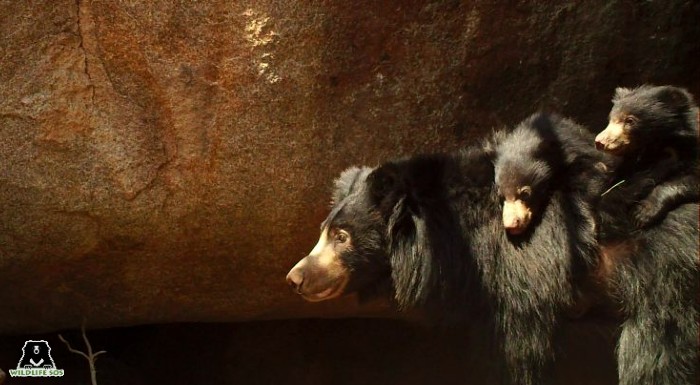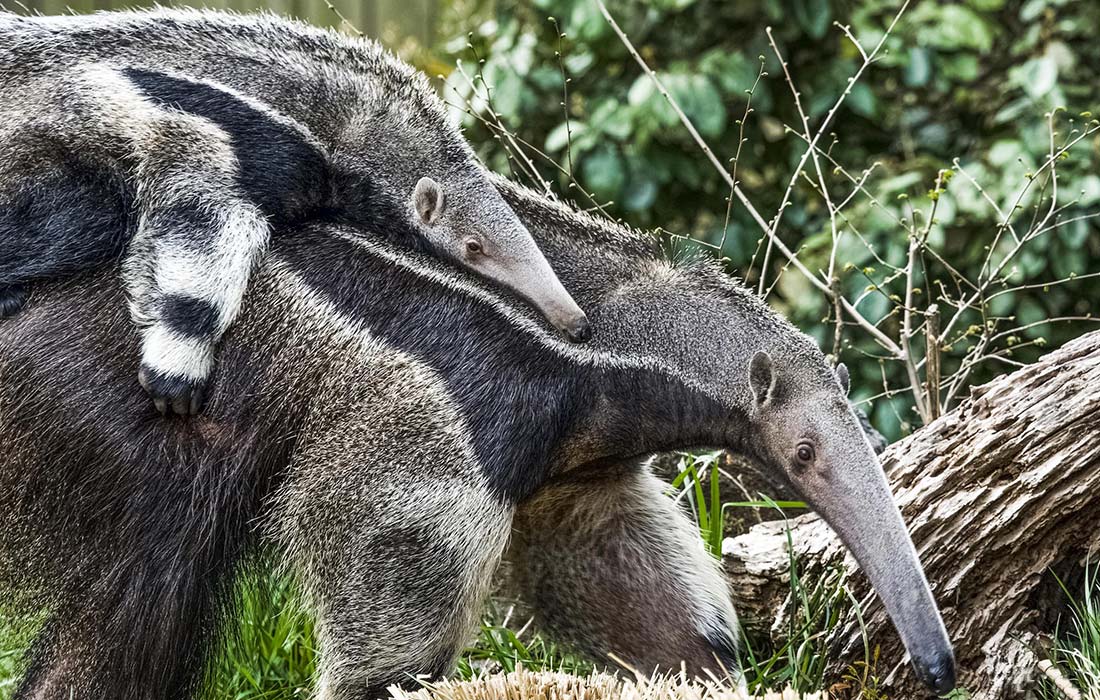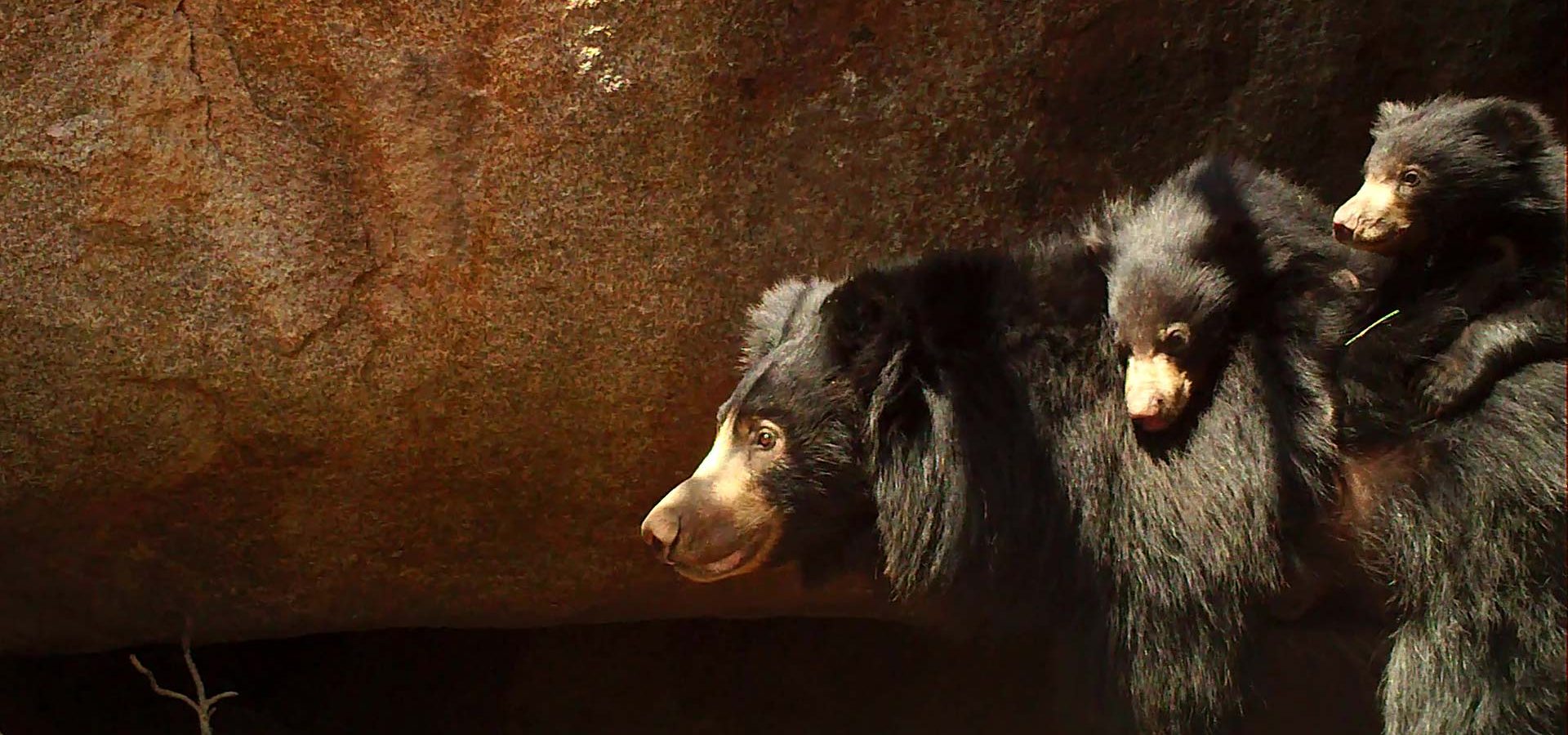Sloth bears are unique from other bears in many ways, and certainly one of the most notable and endearing traits of the sloth bear is that they carry their cubs, usually one or two, around on their back for the first six to nine months of the cub’s life. And sure, occasionally, a photo emerges of a brown bear or black bear cub sitting on their moms back, but no other bear species carries their young around in this manner. Sloth bear cubs can hang on their mother’s back whether she is digging a two-metre hole in the ground for termites, or fighting off a pair of tigers. These cubs would give the riding skill of Mongolia’s horsemen a run for their money. But why do they do it? Spoiler alert, it’s not just a fashion statement or to look cute, so read on!

To explore why sloth bears behave this way, we have to first consider the fact that they are myrmecophagous, a fancy word meaning they eat termites and ants. Why would that be important? Well, it just so happens that other myrmecophagous mammals, such as the giant and lesser anteaters of South America, also carry their young on their back. Since these species are not closely related to sloth bears, this is considered a case of convergent evolution. This basically means different species, not closely related, coming up with the same solution for survival. But if this is the case, what evolutionary pressures were applied to myrmecophagous mammals to make them become a taxi service for their youngins?


The answer may lie in the fact that myrmecophagous mammals often have their heads down foraging. Perhaps foraging in this manner leaves them, and their young, potentially susceptible to predators. Baby anteaters not only ride on their mother’s back for roughly the first year of their life, but will also align their markings to match up with their mothers’ markings. This makes the young hard to see and potentially hides them from predators that purposely seek out young vulnerable prey. And though giant anteaters do not overlap with tigers, they do overlap with jaguars which often prey on anteaters. Sloth bear cubs can also stay partially hidden on their mother’s back, and if mom gets in a scrap with a tiger, she need not worry about where her cubs are. They are attached to their mother, for better or worse.

It is important to understand that sloth bears and Bengal tigers once overlapped throughout the sloth bears’ range. They still overlap throughout most of the tiger parks in India. And sloth bears make up approximately 2% of a tiger’s diet. Though this is not a huge amount of a tiger diet, it is certainly not negligible. The odds are that if a baby is not onboard, more cubs would fall victim to not only tigers but other smaller predators such as leopards or wolves. So, it’s safer on mom’s back, and we say “saddle-up, baby bear”!





